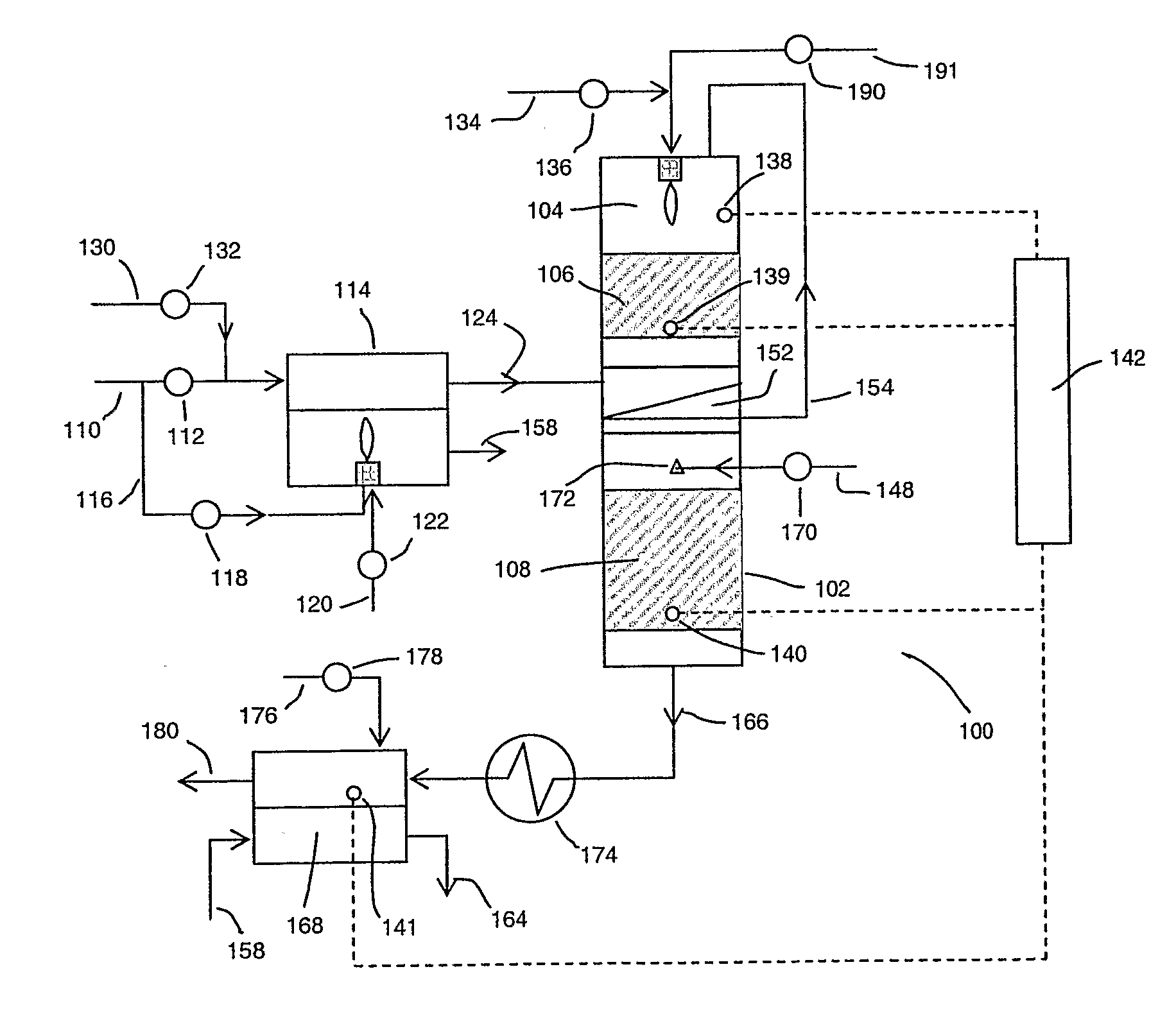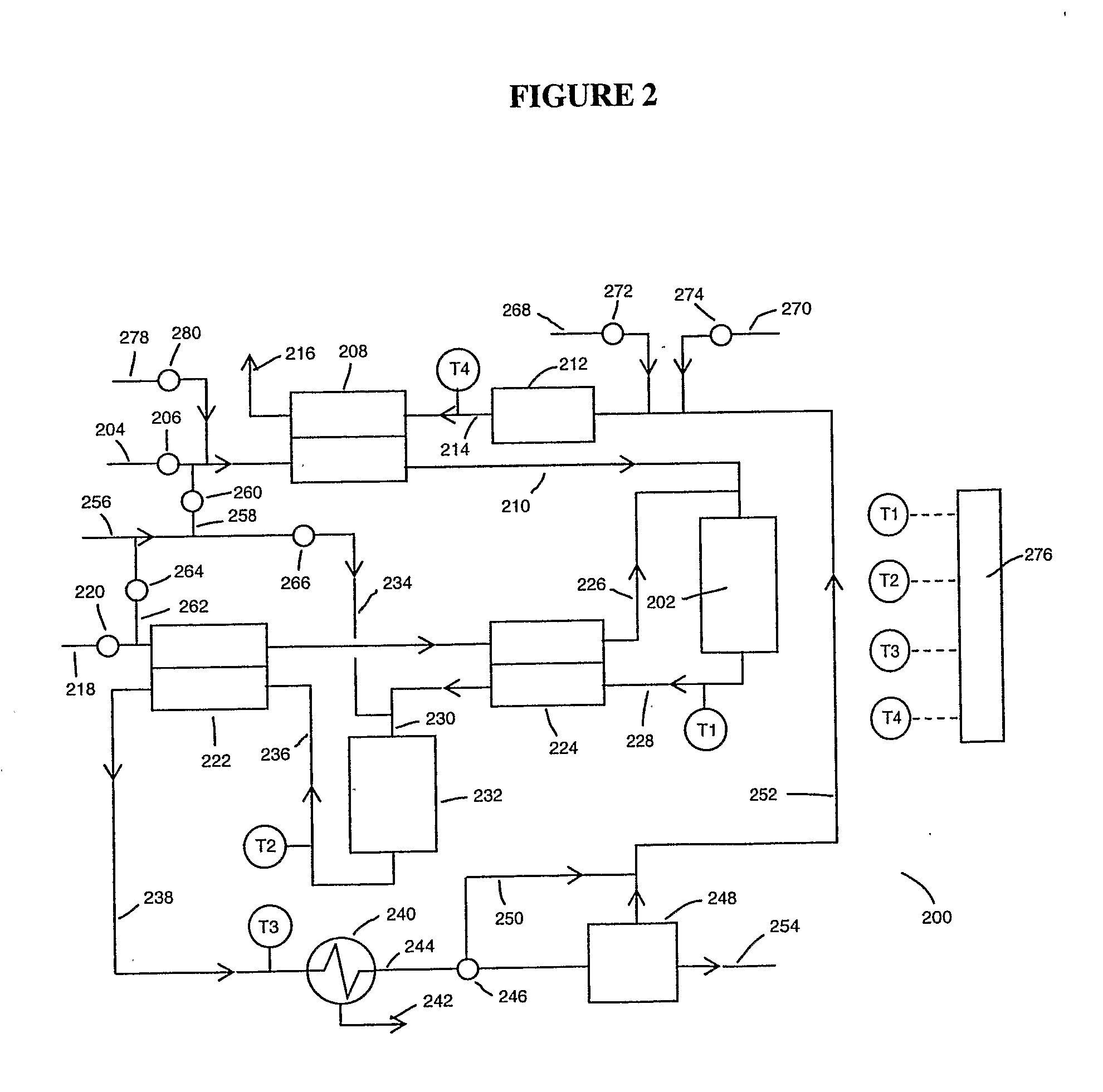Hydrogen Generator Apparatus And Start-Up Processes
a hydrogen generator and hydrogen generating technology, applied in the direction of chemistry apparatus and processes, chemical/physical/physicochemical processes, and hydrogen separation using solid contact, etc., can solve the problems of increasing the severity of the challenge, the difficulty of storing and distributing hydrogen, and the difficulty of producing hydrogen in smaller scale units, so as to save gas compressor capital and operating costs, improve heat recovery efficiency, and save compression costs
- Summary
- Abstract
- Description
- Claims
- Application Information
AI Technical Summary
Benefits of technology
Problems solved by technology
Method used
Image
Examples
Embodiment Construction
Overview of Hydrogen Generation Processes
[0038] The hydrocarbon-containing feeds used for reforming are typically gaseous under the conditions of reforming. Lower hydrocarbon gases such as methane, ethane, propane, butane and the like may be used. Because of availability, natural gas and liquid petroleum gas (LPG) are most often used as feeds. Biogas may also be used as a feed. Oxygenated fuels such as methanol and ethanol are included as hydrocarbon-containing feeds for all purposes herein.
[0039] Natural gas and LPG typically contain sulfur compounds, including odorants that are intentionally added for leak detection. Odorants conventionally used are one or more organosulfur compounds such as organosulfides, e.g., dimethyl sulfide, diethyl sulfide, and methyl ethyl sulfide; mercaptans, e.g., methyl mercaptan, ethyl mercaptan, and t-butyl mercaptan; thiophenes of which tetrahydrothiophene is the most common; and the like. The amount used can vary widely. For natural gas, the orga...
PUM
| Property | Measurement | Unit |
|---|---|---|
| temperature | aaaaa | aaaaa |
| temperature | aaaaa | aaaaa |
| temperature | aaaaa | aaaaa |
Abstract
Description
Claims
Application Information
 Login to View More
Login to View More - R&D
- Intellectual Property
- Life Sciences
- Materials
- Tech Scout
- Unparalleled Data Quality
- Higher Quality Content
- 60% Fewer Hallucinations
Browse by: Latest US Patents, China's latest patents, Technical Efficacy Thesaurus, Application Domain, Technology Topic, Popular Technical Reports.
© 2025 PatSnap. All rights reserved.Legal|Privacy policy|Modern Slavery Act Transparency Statement|Sitemap|About US| Contact US: help@patsnap.com



